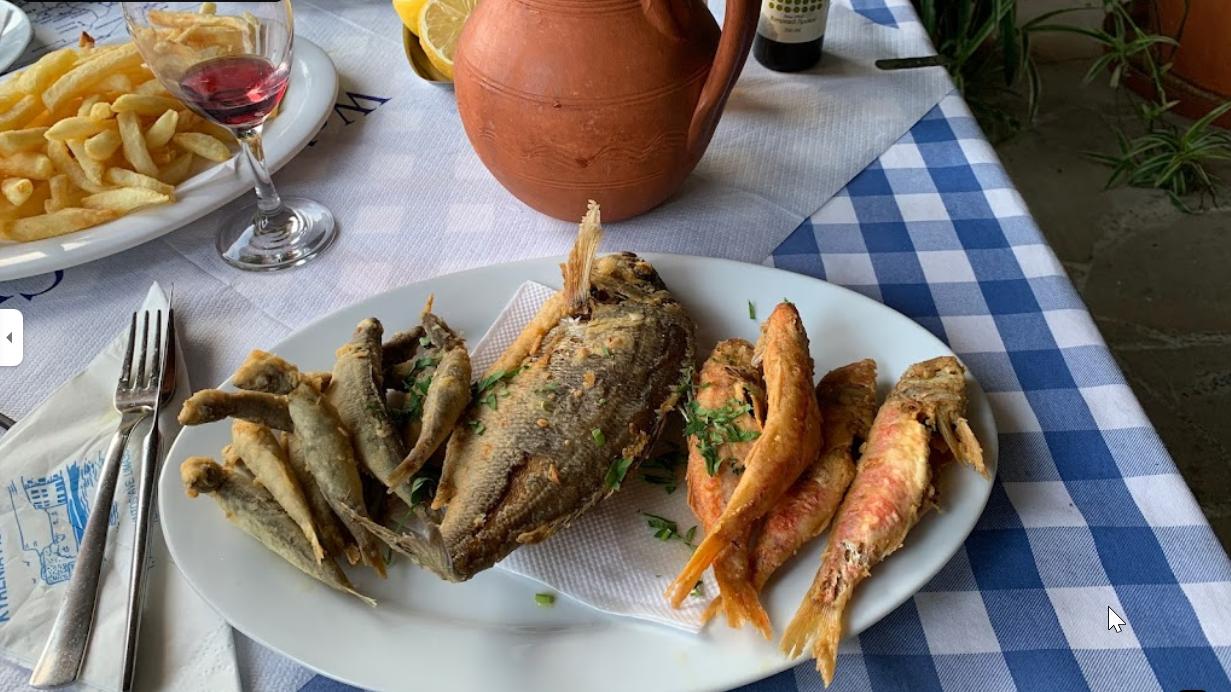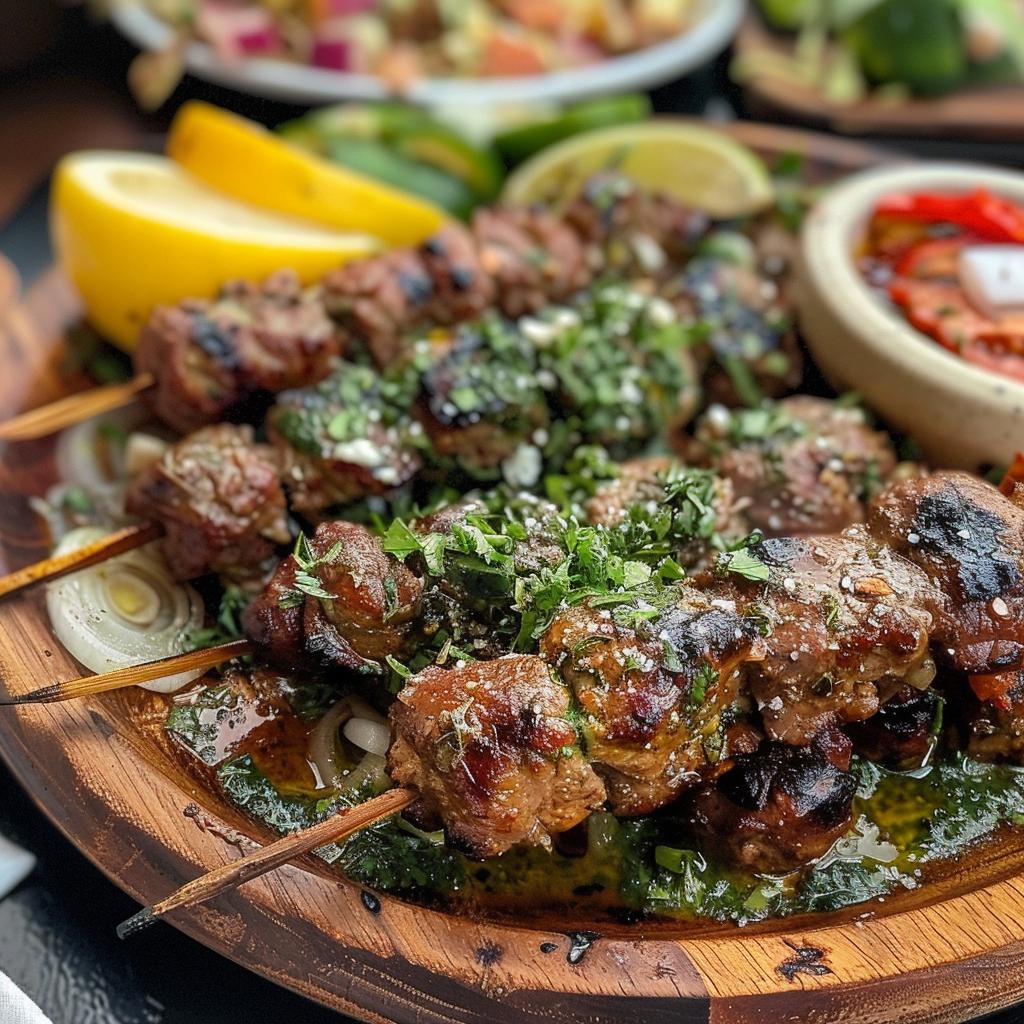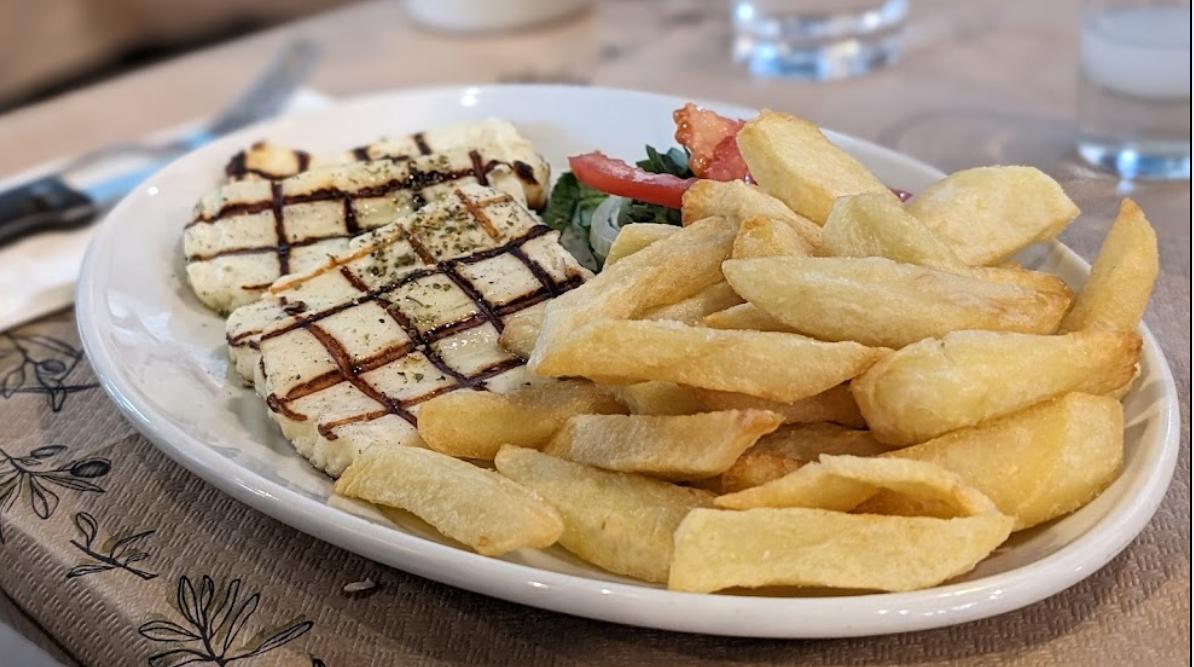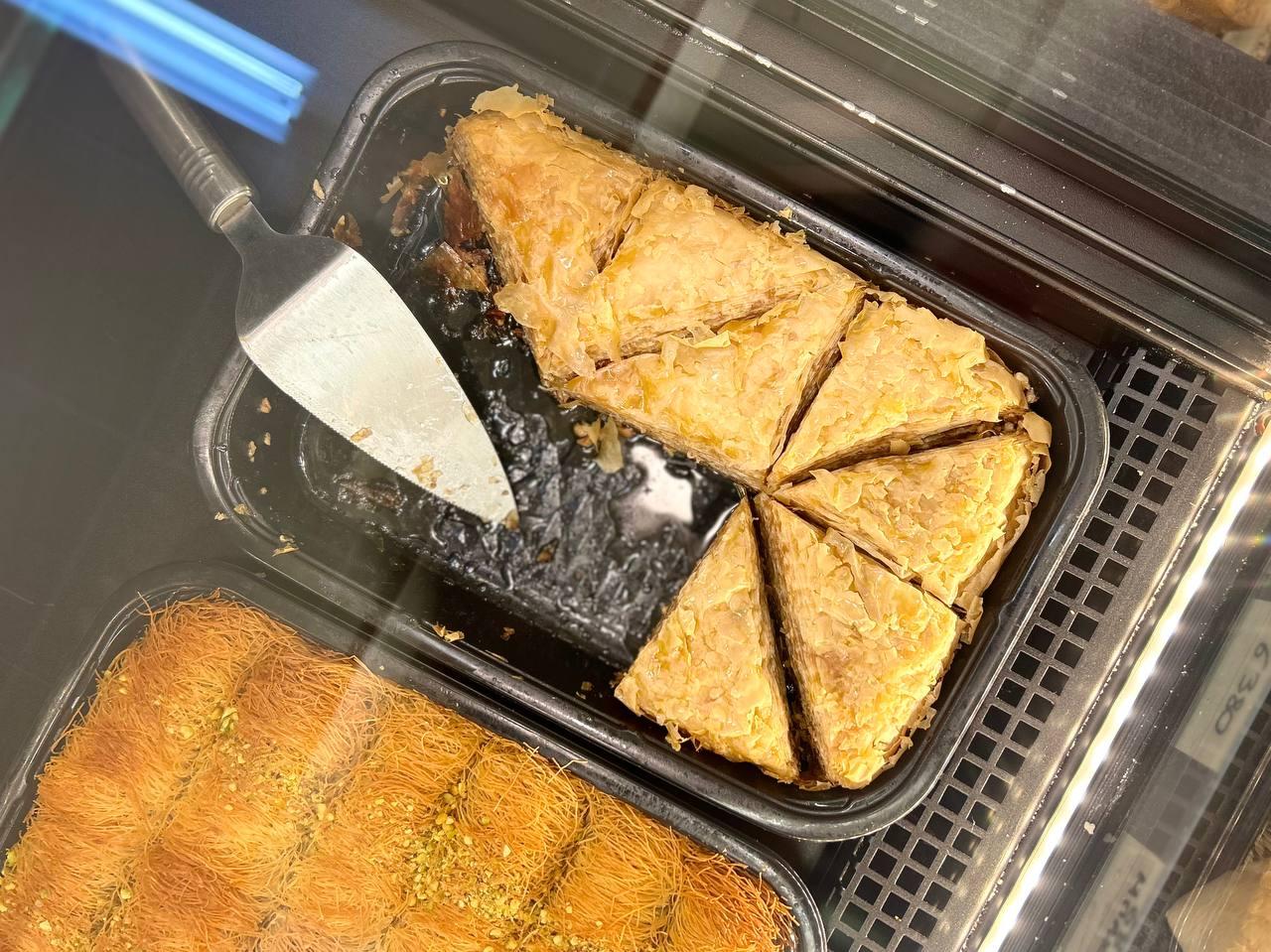If your favorite way to experience the world is to taste it, then come to Cyprus! The cuisine of Cyprus makes it an interesting destination for foodies. Let's try to see why.
The island of Aphrodite is predominantly characterized by Mediterranean cuisine, but it has absorbed the culture of food preparation from different parts of the world. Mediterranean food is characterized by a high content of vegetable products, olive oil, fish, red meat, and local seasonal fruits. It mainly consists of home-cooked dishes with minimal processing and herbs. The Mediterranean diet is known as the basis of longevity.
For a gastronomic tourist, food is first and foremost a cultural category. From this position traditional cuisine is perceived in connection with history, religion, economy, politics, customs, legends, and other features that emphasize the uniqueness of our island.
In Cyprus, there are traditional dishes from Greece, Turkey, the Southern Balkans, and other Mediterranean regions, as well as culinary specialties from Italy, Great Britain, and Eastern countries. Some culinary recipes have retained their original basis, but have undergone many changes.
Local vegetables and spices are often used as ingredients. For example: peppers, tomatoes, eggplants, or lemons. The local cuisine offers an abundance of kebabs made of pork, chicken, lamb, and other meats. Locals use only quality olive oil. Local olive farms organize tours for everyone, where you can pick olives from the tree and press them yourself with an ancient stone press. Just as it was done centuries before the invention of electric presses.
Local farmers make unique cheeses, including those made with goat and sheep milk. Often food is seasoned with aromatic herbs such as thyme, oregano, basil, rosemary, and mint. Fortunately for Slavic tourists, hot pepper is not very popular. The basis for meat dishes is mutton. The meat of rabbit, pork, and poultry is in no less demand. Beef is used less often, as there are few pastures for large animals in Cyprus. There are many fish restaurants in Cyprus. Oddly enough, ingredients are often shipped from neighboring countries.
No Cypriot meal is complete without fresh lemons. Lemon juice is squeezed right before eating. It is abundantly poured into green salads, on fish, and meat, naturally added to a glass of water, and even in soups. By the way, Cypriots eat soups quite rarely. Mostly only in wintertime. In local taverns, you will not find soups in the menu. But you will see the main representative of Cypriot cuisine - meze.
Meze
Before telling you about meze, let me make a short digression and tell you what traditional Cypriot taverns are. These are usually family-run establishments where the owners have passed the business on to their children and they prepare the younger generation to pass on the torch. The owners cook and serve the guests themselves. Cypriots have a tradition of coming to taverns with their families on weekends, after church. Mostly all the visitors know each other. If the tavern is not located in a busy tourist spot, it opens only on weekends and has a limited list of menu offerings, but it is as traditional and homemade as possible.
A meze is a set of appetizers or small dishes served on small shared plates. There are vegetarian meat or fish meze. Meze is served for several people and is served in portions. The olives, bread, and sauces are brought first. The most popular sauce in Cyprus is tzatziki, based on yogurt and cucumbers. Beet sauce with kefir and garlic, hummus, and a sauce made of ground eggplant and tahini are also a must. After that, small meat or fish appetizers are brought, such as fried small fish. A salad of fresh vegetables is a must in the meze. You are advised not to get full, as the main course is brought at the end. This depends on the restaurant, for example, grilled sea bass or meat. Different establishments offer meze with their peculiarities, with different quantities and compositions of appetizers, but the main principle remains the same. As a large number of dishes are served, it is not expected that each dish should be eaten in its entirety. Both fish and meat meze are worth trying in Cyprus. Some restaurants also offer vegetarian meze.

Souvlaki
It is hard to find a Cypriot who would say that he does not like souvlaki. It is the most accessible and widespread dish of traditional cuisine. Souvlaki is sold at every turn. They are small kebabs usually made of chicken, pork, or lamb meat, cut into pieces, and marinated beforehand. The marinade is prepared using lemon juice, fragrant herbs, and olive oil.
Small wooden sticks on which the meat is strung are called souvla, hence the name of this dish. These kebabs are fried on coals or grill.
Ready souvlaki served on a plate directly with skewers with garnish in the form of french fries and salad. The second way of serving the dish is more popular - the meat is removed from the skewer and wrapped in a bread flatbread (pita), and added to it with a choice of salad, sauces, fries and mustard. In addition to being delicious, souvlaki is also an inexpensive dish to dine on. This is nice, as prices in Cyprus are not the most budget-friendly. Souvlaki is said to have a well-balanced balance of proteins, fats, and carbohydrates. Archaeologists have discovered that the ancient Greeks ate meat fried on sticks as early as 1500 BC. Archaeologists also found a well-preserved clay brazier in the excavations.

Kleftiko
This is one of the most famous and popular dishes in Cyprus. Kleftiko is a long stewed lamb meat with vegetables. The meat is cut into large pieces. It is cooked for several hours and when cooked it becomes very soft and melts in the mouth. As a rule, kleftiko is cooked in clay pots in small round wood-fired ovens on the street. Nowadays you can also see stalls on the streets where they prepare kleftiko for takeaway. It is not made in pots, but wrapped in foil.
When serving in the restaurant they add boiled potatoes and green salad as a side dish. The dish is sprinkled with chopped cilantro on top. Local white dry wine is usually served with the meat.
Kleftiko is also called "stolen meat" because according to legend, this way of cooking the dish came from unclean shepherds. They stole sheep, sealed the meat in clay, and buried it under the fire. For several hours under the fire, the meat became soft and juicy.
Stifado
Another popular meat recipe in Cypriot traditional cuisine. Stifado means stew in Greek. Stifado is a meaty Greek dish that resembles a stew. As a rule, Greeks cook it in winter, when the extra heat from the oven for an hour or even two is not a problem, but, on the contrary, only helps to warm up. Stifado is a hearty and very tasty meal, the name of which hides the method of its preparation - stewing. The meat turns out very soft and juicy, almost like in kleftiko. Previously, stifado was cooked in the mountainous regions of Greece from hare or wild boar, so the cooking process was very time-consuming. Most often the meat was marinated beforehand and then stewed for a long time, as the game requires longer heat treatment. Nowadays, stifado is most often made from beef, rabbit, or even chicken. You can think of it as just meat stewed in a certain way.
There are only two main ingredients needed to make stifado - meat and onions. The peculiarity of the classic stifado is the use of a large amount of small onions, which, despite the duration of cooking, retains its shape and serves as a garnish. Peeling such onions is a labor-intensive task, and to speed up the process, they can be bought in Cypriot stores already peeled. Wine and tomato paste are used for gravy. From spices traditionally used are bay leaf, cinnamon, cloves, and pepper.
Stifado is cooked in an unusual way. Meat and onions are fried in turn in the same dish. As a rule, onions are fried after meat. The stewing process lasts from one to two hours, depending on the type of meat and its quantity.
Halloumi
Halloumi is a hard, salty cheese that is sold in brine. Because of its higher melting point, it can be pan-fried and grilled like some pork kebabs. It is just like a piece of meat, browning rather than dripping into the fire.
Halloumi is made from a mixture of goat's and sheep's milk, in industrial versions cow's milk is often added - simply because neither goats nor sheep can provide factory scale. And then there's the mint - identifiable by its sparse grayish-green flecks. It adds a faintly perceptible freshness to the cheese. Halloumi with mint is best eaten plain or added to green salads.
It is impossible to come to Cyprus and not try halloumi cheese. It is the national dish of the country. Halloumi is a trademark of Cyprus. It is sold in gift packs in tourist stores and airports, and friends always ask to bring it with them.

Louvi
Louvi is a traditional Cypriot vegetarian dish made from beans. To prepare it, the beans are soaked overnight. Before cooking, a mixture of fragrant seasonings is added to the beans. For example: garlic, onion, parsley, dill, mint. To the finished dish is added olive oil, salt and, if desired, lemon juice. Louvi is served hot with bread or as a side dish with meat and salad. Louvi is also an element of a healthy diet. This dish is suitable for vegetarians and is consumed during Lent. By the way, it should be noted that in Cyprus grows a large number of different beans. Therefore, the final taste and appearance of Louvi depend on the preferences of the hostess.
Koupepia
Koupepia is also a very popular Cypriot dish that you will always find in ready-to-eat food outlets. This dish is also called dolmade and resembles the dolma we know. Just like dolma koupepia is made from marinated grape leaves in which a filling is put. The stuffing is a mixture of rice, minced meat, aromatic herbs such as cilantro or parsley, as well as aromatic spices. A competent combination of these ingredients guarantees a stunning dish that will conquer even the most demanding gourmets. One way to prepare Kupepia is to stew the grape curls in tomato sauce or even in wine. Kupepia can be either a main course or one of the appetizers, such as in a meat meze. When served, Greek yogurt and white wine are offered with the dish.
Macaronia tou fournou
The name can be translated as oven-cooked pasta, is one of the most common everyday dishes in Cypriot cuisine. Just like koupeyou macaronia tou fournou is sold everywhere in stores in ready-made form. This dish is sold in portioned foil trays. They need to be put in the oven to heat them up.
To prepare this hearty dish, first boil the pasta al dente. Usually use thick short pasta with a hole in the middle. Separately fry minced meat with onions and tomato paste. Then prepare béchamel sauce. It is cooked based on milk with the addition of flour, butter and nutmeg.
After all the ingredients are ready, they are laid out in layers in a mold with high sides. Pasta is mixed with the "béchamel". After that, the pasta is baked in the oven until golden crust. This dish turns out to be fatty and very hearty. It is usually served with a salad of fresh vegetables. To reduce the calorie content of the dish is recommended to cook it on skim or vegetable milk.
Baklava
A sweet dessert that came to Cypriot cuisine from the East. The history of baklava goes back to ancient times. The basic elements of this dish were known in the Middle Ages: puff pastry, nuts, and syrup. However, the exact date of origin and the original place of origin of baklava are unknown. Ancient sources testify that baklava was cooked in the times of the Byzantine Empire. In our time this sweet has become commonplace in many cuisines of the world. Baklava is one of the most legendary oriental desserts. Baklava is mentioned in various historical sources and literary works. This dish is often prepared for holidays and family celebrations, turning an ordinary dessert into a real work of art.
There are many varieties of baklava, which differ in stuffing and cooking methods. Some recipes add raisins, coconut shavings, honey or fruit.
Baklava is usually served as sliced pieces decorated with nuts or powdered sugar. Baklava is sold in beautiful gift boxes at airports and in all tourist stores. It makes a great souvenir to bring back from a trip to Cyprus.

Drinks:
Commandaria
Traditionally, Cyprus has produced excellent quality alcoholic beverages, but Commandaria stands apart from the rest. It is called a national treasure, consumed on all holidays, and used at the Liturgy. This wine is an indispensable participant in the annual wine festival. Commandaria has an amber, cognac, or golden brown color with dark cherry reflections. Commandaria has a rich sweet flavor with notes of dates, walnuts, currants, honey, vanilla, cinnamon, licorice, and spices. The long aftertaste has hints of dried figs, nuts, and dark caramel.
The aromatic palette is formed by grape syrup, quince jam, prunes, apricots, raisins, cloves, and oak bark. In some varieties, the fruity and woody fragrance is diluted by tart shimmers of tobacco, chocolate, and roasted coffee beans.
In the surviving written sources, Commandaria is mentioned as early as the 8th century BC. Only two grapes are used for making Commandaria in Cyprus - red Mavro and white Xinisteri. The wine is aged in wooden barrels for at least two years. There are several varieties of Commandaria produced in Cyprus. There are inexpensive brands from 10 euros per bottle, as well as elite varieties, where the cost of a bottle reaches 80 euros.
Zivania
Zivania is a traditional strong Cypriot drink made from fermented pulp (crushed grape berries) through a process of distillation. The name of this drink comes from the word "zivana", which in the Cypriot dialect of Greek means "grape pomace".The process of producing zivania from grape pulp is quite simple. Water is added to the pulp and the drink is produced by distillation. The process is slow, but locals are attracted by the ritual of making this traditional drink. Zivania, made exclusively from grapes, has a rather pungent taste and intense aroma. In Cyprus, cinnamon, basil, fig sticks and honey are often added to Zivania. It is a rather strong drink, which is consumed after a large meal. It is served like vodka in small shot glasses.
Zivania began to be produced at the end of the 15th century in Cyprus. As well as Commendaria, Zivania is considered an element of the local culture.
Cypriot wines
The wine produced in Cyprus is widely known throughout the world. There is even a legend that the Turkish Sultan Selim II went to conquer the island only because he liked the local wine very much. Many Cypriot wines are produced using the Mavro variety, which makes them unique - such grapes grow only in Cyprus, they have a particularly sweet flavor. In some cases, the wine is made entirely based on Mavro, and it should be drunk only in the year of bottling.
In total, about 150 grape varieties are cultivated on the island, from which fortified muscats, sherry, malaga, flavored, white, rose and red wines, as well as port wines, are produced. About 75% of production is exported, and these are mostly fortified wines.
The most famous are the Commandaria, which you read about above. A well-known wine is Moshato from Ayia Mavri, which has won many gold awards at annual exhibitions. Another regular winner of international wine competitions is 'Shiraz' from the Kolios winery. There are many good wineries in Cyprus and each of them produces several varieties of fine beverages of high quality. Very popular on our island are wine tours during which you can see the country and determine for yourself the most delicious wine.
Coffee
Cypriot coffee is not only a drink for all times, but also a way of life for Cypriots. Coffee houses in Cyprus are the place for romantic meetings and business dates. Cypriot coffee is very strong and thick. It is served in small cups.
Where to try it:
Restaurants and taverns.
Just like choosing the best wine, it is very difficult to choose the best restaurant in Cyprus, as there are so many good restaurants on the island. Based on data from the popular site Tripadvisor we note Piatsa Gourounaki - a meat restaurant in the center of Nicosia, the number of positive reviews including for 2024 is impressive.
We can also recommend Ocean Basket, an excellent chain of fish restaurants, with offices in all parts of the island. In Paphos, there is a famous restaurant Pelicanos famous for the fact that there is a live pelican living at large. This restaurant serves classic fish meze. Melanda Fish Tavern near Limassol won the title of the best on the island in January 2023.
The meat meze is recommended at Forsos Tavern in Limassol, which was voted the best in Cyprus in 2023. For a traditional kleftiko it is best to go to one of the village taverns, such as The Village in the mountain village of Platres, although you can choose any tavern in Platres - you can't go wrong.
You can buy delicious and very fresh traditional Cypriot cuisine at very reasonable prices in the ready-to-eat food chains that are common in Cyprus. For example, in the chains of Magaritis, Sigma, Kapatsos.
Cypriot national cuisine is considered one of the healthiest in the world due to the large amount of green salads, olive oil and lemons. It has a lot of meat dishes that come heavily grilled for our tastes. Cypriots don't use a lot of pepper, their food is quite acceptable to us. They rarely use mayonnaise but are very fond of pastries and bread. We recommend you to come and make your own opinion about Cypriot cuisine. Enjoy your gastrotour.

